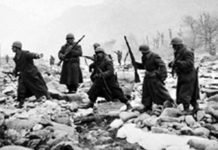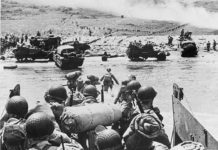Sitting on my desk right now is a Fisher Space Pen. Open, it measures about 5.5″ long, and weighs in at a little less than 5 ounces.
This pen, much like any other ballpoint writing instrument, writes. The Fisher Space Pen, however, doesn’t just write under normal conditions. It lets you communicate under conditions your normal earth-bound pen would never dare to attempt. Its sealed ink cartridge has a shelf life estimated to be about 100 years long. You can write upside down, as well on greasy surfaces with no problems at all.
You can write underwater, if you are so inclined. And best of all, because of that 45 psi sealed ink cartridge with it’s visco-elastic solid-gel ink, this pen writes in the almost perfect vacuum of outer space.
Although I strongly suspect I will never be able to sign a check in near-earth orbit, I love this pen, and really enjoy the memories it gives me of the Space Race. I was about 8 years old when Neil Armstrong set foot on the moon. This wonderful little stainless steel pen reminds me of the excitement of that time, the endurance of the human spirit, and our collective capacity to do just about anything we want, or need to do.
Another thing this Fisher Space Pen does is remind me of a darker side to human endeavors. All of us should remember that darker nature, the one that resides in all of us, saints and sinners.
That’s a pretty powerful writing instrument, isn’t it? This simple pen, more than just about anything else, personifies the Cold War as few objects or ideas will for me. It reminds me of a time that mixed national pride and national paranoia to heights that are almost mythical in nature. That strange brew worked to produced gifts of priceless value, while at the very same time, improved greatly our already well-honed capacity to kill in mass.
The Cold War, like that Fisher Space Pen, is remarkably flexible, and a slippery thing you may have trouble grasping. This was a time when rockets blazed to the heavens, and riding these mighty ships (the Saturn V, the Redstone booster, the Voskhod) were young travelers with brave smiles and braver dreams. These men and women climbed into tin cans and let themselves be flung outward on the first steps of a long, strange journey, and they knew that, although they could never hope to see the ultimate completion of this journey, they were willing and able to risk their lives to make the beginning happen.
The darker side of the space race was built into those rockets, just as the redundant fuel delivery systems and guidance controls were. Have you ever considered what those rockets also meant? They meant that two nations were, in effect, saying “See what we can do to you? Those moon rockets were, after all, simply ICBMs with a facelift.
Perhaps it is best when we can take some time and place in history and put it into terms that mean something to us on a real, personal level. What does the term cold war mean to you? Is it a picture ballistic missiles, fueled and waiting in their hidden silos? Or is it Beaver Cleaver getting ragged on by Eddie Haskell? Maybe for you, the Cold War brings thoughts of international spies (ala James Bond) or the Twilight Zone, the frowning Berlin Wall or Rocket Pops.
The Cold War means all those things. And who fought the war? Just the politicians and the men and women in uniform? Or did the artist and rock musician have a say in the outcome of the Cold War? Did novelists such as Neville Shute and Richard Matheson help to “win” the war? Did those 50’s-era film makers with their badly realized alien invasion fleets flitting across Cinemascopic dreamscapes contribute to the front lines of that war?
One way you can begin to fathom that shadowy, paranoid period of time is to look at it against the mosaic of popular culture. It won’t always be scientific or logical, but it will be a lot of fun, and we can examine everything from “The Incredible Shrinking Man” to “Pink Floyd’s The Wall,” “On The Beach” to “Dr. Strangelove” to the rise of Playboy Magazine.
Another way to get some sense of the Cold War is to examine nuclear policy, go from Manhatten to Trinity to the latest Tomahawk cruise missiles, see what makes one of those devices tick. Did you know the world almost found itself fighting an accidental thermonuclear war in 1995? And that many atomic bombs sit on the bottom of the world’s oceans, unaccounted for?
Many roads. Tricky roads, too. In most of the wars that proceed this peculiar conflict, lines were drawn, fronts existed in real, geographic locations, and the participants, although not always easy to spot, usually wore the uniforms of their prospective sides. In the Cold War, everyone, in some way or another, were active participants in that war. And that probably includes you.








